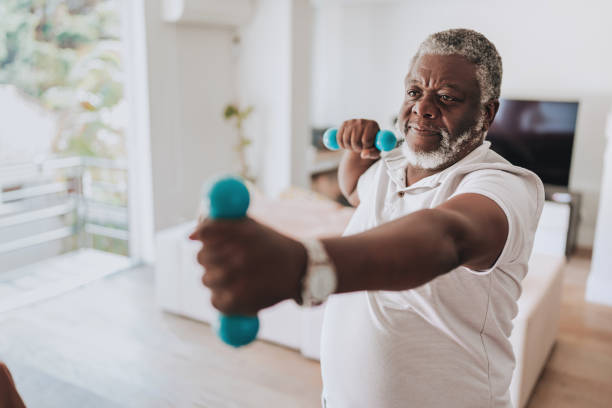Managing diabetes isn’t only about diet and medication. Daily movement plays a major role too. Exercise is one of the most powerful tools you can use to keep blood sugar levels steady and support long-term health. When you stay active, your muscles use glucose for energy, which lowers sugar in the bloodstream. It also helps your body respond better to insulin, making it easier to prevent spikes and crashes. Whether you’re newly diagnosed, living with type 1 or type 2 diabetes, or simply aiming for better control, regular exercise can make a big difference.
In this post, we’ll explore how exercise helps control blood sugar and diabetes, the best types of workouts for beginners and advanced levels, and practical tips to stay consistent even on busy days.
Why Exercise Matters for Blood Sugar Control
When you move your body, your muscles use glucose for energy. This process naturally lowers the amount of sugar in your bloodstream. Exercise also improves how well your body responds to insulin, the hormone that moves sugar into your cells and keeps blood sugar levels balanced. Over time, staying active can make your body more efficient at using both glucose and insulin, which is especially important for people with diabetes.
According to the Centers for Disease Control and Prevention (CDC), regular physical activity not only lowers blood sugar but also reduces the risk of long-term complications like heart disease, nerve damage, and vision problems. It can also improve overall health and quality of life, making it one of the most effective natural ways to manage diabetes.
Some key benefits of exercise for people with diabetes include:
- Better blood sugar control by helping glucose enter your muscles faster
- Lower insulin resistance, making your body more sensitive to insulin
- Improved heart health, reducing the risk of heart attack and stroke
- Healthy weight management, which supports long-term blood sugar balance
- Reduced stress and better sleep, which both affect blood sugar stability

How Exercise Affects Insulin Sensitivity
One of the main struggles with diabetes is insulin resistance. This means your cells don’t respond well to insulin, so sugar builds up in your blood instead of moving into your cells for energy. Over time, this can lead to high blood sugar, weight gain, and a higher risk of complications.
Exercise helps change this cycle. When you exercise:
- Your muscles absorb more glucose, even without the help of insulin, which lowers blood sugar naturally.
- Your body becomes more sensitive to insulin, so the insulin you produce—or take as medication—works more effectively.
- The benefits last up to 24 hours or more after your workout, giving you steady blood sugar control long after you’ve finished exercising.
That’s why both aerobic exercise (like brisk walking, cycling, or swimming) and strength training (such as lifting weights or bodyweight exercises) are highly recommended for people with diabetes. Together, they not only improve insulin sensitivity but also support weight management, heart health, and overall energy levels.
Best Types of Exercise for Diabetes
Not all workouts are the same when it comes to blood sugar control. Here are the most effective types of exercise:
1. Aerobic Exercise
Aerobic activity gets your heart pumping, increases oxygen flow, and helps your body use glucose more effectively. When you do aerobic exercise, your muscles pull sugar from the bloodstream for energy, which lowers blood sugar levels both during and after the workout. It also strengthens your heart, improves circulation, and supports weight loss—all of which are important for managing diabetes.
Examples of aerobic exercise include:
- Brisk walking – easy to start and safe for most people
- Jogging or running – burns more calories and boosts endurance
- Cycling – gentle on the joints and great for leg strength
- Swimming – a full-body workout that’s easy on the knees and back
- Dancing – fun, social, and effective for burning calories
For best results, aim for at least 150 minutes of moderate aerobic activity per week, as recommended by the American Diabetes Association (ADA). This can be broken into 30 minutes a day, five days a week, or even shorter sessions of 10–15 minutes spread throughout the day. Consistency matters more than intensity, so choose activities you enjoy and can stick with long-term.
2. Strength Training
Building muscle helps your body store more glucose in a safe and effective way. Muscles act like storage tanks, pulling sugar out of the blood and keeping levels steady. The more muscle you build, the better your body can manage insulin and control blood sugar. Strength training also boosts metabolism, supports weight loss, and improves bone and joint health, which is important for long-term diabetes management.
Some great strength training options include:
- Weight lifting – using dumbbells, barbells, or machines to build strength
- Resistance bands – portable and easy to use at home or on the go
- Bodyweight exercises – like push-ups, squats, and planks that require no equipment
For best results, aim to do strength training at least 2 to 3 times per week. Be sure to work different muscle groups, such as arms, legs, back, and core, and allow rest days in between for recovery. Even small improvements in muscle strength can have a big impact on blood sugar control and overall health.
3. Flexibility and Balance Exercises
While these exercises don’t directly lower blood sugar, they play an important role in overall fitness and diabetes care. Flexibility and balance workouts keep your joints healthy, improve posture, and make daily movements easier. They also reduce the risk of falls and injuries, which is especially important if you have diabetes-related nerve or circulation issues. In addition, these activities can lower stress levels, support relaxation, and even improve sleep—all of which help with blood sugar control over time.
Great options include:
- Yoga – combines stretching, breathing, and relaxation to improve flexibility and reduce stress
- Stretching – simple routines that keep muscles loose, prevent stiffness, and support mobility
- Tai Chi – a gentle, flowing exercise that builds balance, reduces stress, and strengthens the body
Adding these exercises to your weekly routine can make your aerobic and strength workouts safer and more effective while giving you extra benefits for both body and mind.

When Is the Best Time to Exercise for Blood Sugar?
The timing of your workout can also impact your blood sugar.
- After meals: Exercising 30 minutes after eating helps lower blood sugar spikes.
- Morning workouts: These can improve insulin sensitivity throughout the day.
- Evening workouts: Helpful for keeping blood sugar steady overnight.
The best time is the one that fits your schedule and keeps you consistent.
Safety Tips Before You Start
If you have diabetes, it’s important to exercise safely. Keep these tips in mind:
- Check your blood sugar before and after exercise.
- Have snacks on hand in case your sugar drops too low.
- Stay hydrated to avoid dehydration.
- Wear proper footwear to protect your feet.
- Talk to your doctor before starting a new workout plan, especially if you have complications.
How Much Exercise Do You Really Need?
The World Health Organization (WHO) recommends at least 150 minutes of moderate activity per week or 75 minutes of vigorous activity. That’s just 30 minutes a day, five days a week.
Breaking it down into shorter 10–15 minute sessions is just as effective. Even small bursts of activity can improve blood sugar levels.
Easy Ways to Add More Movement to Your Day
You don’t need a gym membership to control blood sugar with exercise. Try these simple ideas:
- Take the stairs instead of the elevator.
- Go for a walk after meals.
- Do short stretching breaks during work.
- Try bodyweight exercises at home.
- Turn chores like cleaning or gardening into workouts.
The goal is to move more and sit less. Every step counts.
Exercise and Weight Loss for Diabetes
Excess weight, especially around the belly, can make insulin resistance worse. Exercise helps burn calories and build muscle, making it easier to lose or maintain weight. Even a small weight loss of 5–10% of body weight can improve blood sugar control.
Exercise and Stress Reduction
Stress can raise blood sugar levels through the release of hormones like cortisol. Exercise lowers stress, boosts mood, and improves mental health. Activities like yoga, walking in nature, or group classes can be especially effective.
Combining Exercise with Healthy Eating
Exercise alone isn’t enough. Pairing physical activity with a balanced diet gives the best results. Focus on:
- High-fiber foods (vegetables, beans, whole grains)
- Lean protein (chicken, fish, tofu)
- Healthy fats (avocado, nuts, olive oil)
- Limiting processed foods and sugary drinks
The Plate Method is a simple way to balance meals:
- Fill half your plate with non-starchy vegetables.
- Fill one-quarter with lean protein.
- Fill one-quarter with healthy carbs.

Tracking Progress for Better Results
Keeping track of your workouts and blood sugar helps you see patterns and stay motivated. You can use:
- A fitness tracker or app
- A simple journal
- Your blood glucose monitor
Write down the type of exercise, how long you did it, and your blood sugar before and after. This helps you and your doctor adjust your plan.
Common Exercise Mistakes to Avoid
To get the most from your workouts, avoid these mistakes:
- Skipping warm-ups and cool-downs
- Overtraining without rest
- Ignoring warning signs like dizziness or chest pain
- Forgetting to monitor blood sugar levels
- Expecting results overnight
Remember, consistency matters more than intensity.
The Long-Term Benefits of Exercise for Diabetes
Exercise isn’t just about today’s blood sugar reading. Over time, regular physical activity can:
- Lower the risk of heart disease and stroke
- Protect kidney and eye health
- Improve circulation and nerve function
- Boost energy levels and overall quality of life
These long-term benefits make exercise one of the most powerful natural treatments for diabetes.
Final Thoughts: Take Charge of Your Health
Exercise is a game-changer when it comes to controlling blood sugar and managing diabetes. From walking after dinner to lifting weights at the gym, every bit of movement counts. The key is to start small, stay consistent, and find activities you enjoy.
Now it’s your turn:
👉 What’s your favorite way to stay active?
👉 Have you noticed how exercise affects your blood sugar?
Share your experience in the comments below! Your story might inspire someone else to take the first step toward better health.

